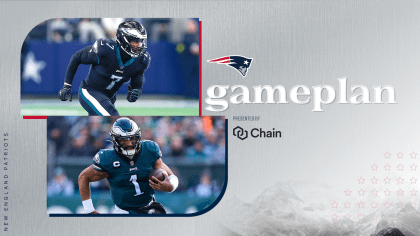The Patriots are no strangers to the league poaching their coaching staff to replicate their success, and now the Eagles are experiencing a similar situation.

As the defending NFC champions, Philadelphia lost both of its coordinators during the offseason. Former offensive coordinator Shane Steichen moved on to the Colts, and former defensive coordinator Jonathan Gannon joined the Cardinals as head coaches. This came after a successful 14-3 campaign that brought the Eagles within a few plays of winning their second Super Bowl title. It’s not surprising that other teams are looking to emulate Philadelphia’s blueprint for success, especially given their rapid rise under head coach Nick Sirianni.
The Eagles have built an elite roster and have become known for their analytical approach to the game. They run systems that have made them darlings on Football Twitter. Offensively, Philadelphia has developed a spread-option-based scheme centered around star quarterback Jalen Hurts. Defensively, they employ a Fangio-inspired system that relies on a dominant front and two-high safety shells.
Much like the New England Patriots have done over the years when coordinators come and go in the Belichick era, the Eagles are promoting from within to maintain continuity on offense. They’ve promoted quarterbacks coach Brian Johnson to offensive coordinator, and with Sirianni being an offensive-minded coach himself, they aim to keep their successful offensive system intact.
However, on the defensive side, the Eagles have brought in Sean Desai, a former Seahawks associate head coach and longtime Bears assistant, to take over for Gannon. While Desai is expected to maintain a similar defensive system, he will add his own twist to it.
Now, as the Patriots and Eagles prepare to face off in the regular-season opener at Gillette Stadium, both teams are dealing with the challenges of having new coordinators. Additionally, most of the Eagles’ starters didn’t see any preseason action, including quarterback Jalen Hurts, which could work in the Patriots’ favor as the Eagles’ frontline players adjust to new play-callers and shake off rust in their season opener.
On the flip side, the Patriots’ offense, under the revamped leadership of offensive coordinator Bill O’Brien, remains a mystery. While O’Brien showed some base concepts in the preseason with quarterback Mac Jones, the entire playbook, including game-plan elements designed to exploit the Eagles’ defense, will be unveiled in the upcoming game.
As the regular season kicks off with a challenging matchup for the Patriots against the Eagles, the game promises to be a chess match as both teams adapt to new coordinators and face the uncertainties of opening day.
In terms of the Eagles’ defense, there were frustrations among fans regarding Gannon’s lack of blitzing and relatively vanilla pass rush schemes in the previous season. Despite having a high pressure rate, the Eagles didn’t heavily rely on blitzes and exotic pass rush schemes. They often depended on their front four to win one-on-one matchups.
It remains to be seen how aggressive the Eagles’ defense will be under Sean Desai’s play-calling. The Seattle Seahawks, where Desai previously coached, ranked last in blitz rate in 2022 but excelled in “creeper” pressures, where one rusher comes from the back seven while an on-the-line player drops into coverage. Nevertheless, the defensive structure will likely remain consistent for the Eagles.
The hallmark of the Fangio defensive scheme, which the Eagles follow, involves starting with a two-high safety structure in coverage. This structure is used to disguise coverages, with the secondary rotating post-snap into various zone coverages like quarters, cover-three, and cover-six. The objective is to delay declaring the coverage structure until after the snap. In the previous season, the Eagles primarily used zone coverages (over 71% of the time), with a significant portion being single-high cover-three (31.7%) and some cover four (26.2%), mixed with man-to-man on third downs (24.5%).

To execute this scheme effectively, the defense needs a dominant front to defend against the run with light boxes, a shutdown corner to handle single-coverage on the backside (such as Darius Slay), and a dependable nickel defensive back.
While the Fangio-inspired scheme is effective in limiting big plays and creating confusion with disguise, it can be vulnerable to well-timed play calls that target zone coverages and exploit man coverage beaters by allowing receivers to adjust after the snap to gain leverage.
Regarding the passing game plan, the Kansas City Chiefs managed to put up 31 points in the Super Bowl thanks to a well-executed game plan from head coach Andy Reid and offensive coordinator Eric Bieniemy. While it may be challenging to replicate the individual talents of Patrick Mahomes, Travis Kelce, and the Chiefs’ prolific offense, many of Kansas City’s big plays were the result of well-designed schemes rather than individual moments of brilliance. It’s possible to replicate some aspects of their success, even if it may not be as productive.